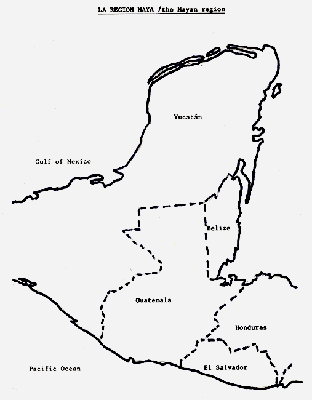Aztec / Mexica Music Notes
1325 – 1521
|
|
I. Pre-Classic:
12,000 BCE – 353 CE
Nothing
is known about Mayan music during this period, except, see the next paragraph.
II. Classic Maya: 353 – 900
Little is known about Mayan music during this period, but for Mayan mural paintings at the archeological site of Bonampak (600-800), near the Usumacinta River in Chiapas, México. These murals show a scene of Mayan court musicians playing instruments, see: => Mayan Art Page #12. The ancient Mayan instruments we know about were drums, maracas, flutes, and ocarinas. The last of these instruments is an ancient (dating back perhaps to 12,000 BCE) oval, flute-like wind instrument with four to twelve finger holes and an opening for the musician's mouth to blow into it. Musical instruments were so important socially that mourners at funerals often would play their instruments during the burial, and, just before the burial site was to be sealed, break the instruments and throw them into the burial place. As seen on the walls at Bonampak, music was also played at ceremonial times such as the coronation of a king or the celebration of military victories. It is important to note that there is evidence music played a role in all Mayan social classes. In the Popol Vuh (see notes on the Popol Vuh: => Popol Vuh), it is also mentioned that drums were used to invoke spirits of the dead and the deities. In this regard, see the use of traditional music in the movie Chac.
III. Post-Classic: Maya-Toltec (900 – 1527)
Javier Quijas Yxayótl: Mayan preconquest:
·
Tonantzin; #7, Music for Rain God Aztec Dances
IV. Post-Conquest Period (1527 – present)
A.d.



